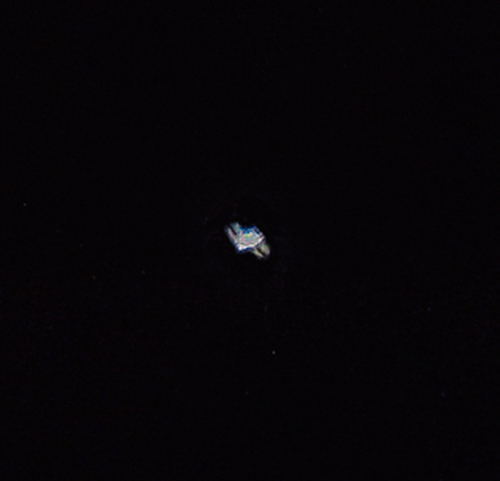Photography
Related: About this forumshooting the moon
when shooting the moon the most important thing to remember is you're shooting thru miles of atmosphere. just like shooting something far away you get a lot of turbulence your have to overcome. so you need to mimimize that distortion
#1 ideally you need a telephoto in the 600-1000mm range on a crop sensor camera. the photo I posted is with a 900mm f9 lens. (actuallyl a small cheap telescope on the same tracking mount o use for deep space long exposures))
#2 if you want crater detail avoid the full moon. you need shadows for crater detail and the full moon has no shadows
#3. you need a very stable mount
#4 wind is your enemy. even with a stable tripod the wind can cause small movements which when your shooting with big telephotos can impact sharpness
#5 low humidity is your friend. the more moisture in the air the more turbulence.
#6 use live view and magnify the image to get the sharpest focus. use manual focus mode.
#7 take a lot of images. you're looking for the lucky shots where the turbulence is the least. some people actually shoot short (15 second or so) videos and then use software to use the best frames from the video. I use a mac and my software choices for that are limited. there are more choices for windows computers to do that. I shot a video last night but havent had a chance to work on it.
#8 use a few different exposure settings. I use spot metering aperture priority to get a baseline exposure and then vary my shots a stop or 2 around thatusing manual mode. (usually shorter exposures since aperture mode tends to overexposure the moon IMHO)
#9 depending on your lens you may want to convert the photo to black and white. some lenses can leave a lot of color fringing around the edges of the moon.
AndyS
(14,559 posts)Astro and long lens photography are a special subset of imaging and have their challenges.
CaliforniaPeggy
(149,560 posts)I was aware of some of these, but not all. I will attempt to make use of the ones I can.
Glamrock
(11,794 posts)HAB911
(8,871 posts)It is incredibly bright and all of my attempts have been overexposed. this is the best I managed before, scheduled to try again around the 5th of April

rdking647
(5,113 posts)HAB911
(8,871 posts)did you post that here? I'll take a look at some of your posts!
rdking647
(5,113 posts)
I bow before you.
I am unworthy.
I will continue to try my best.![]()